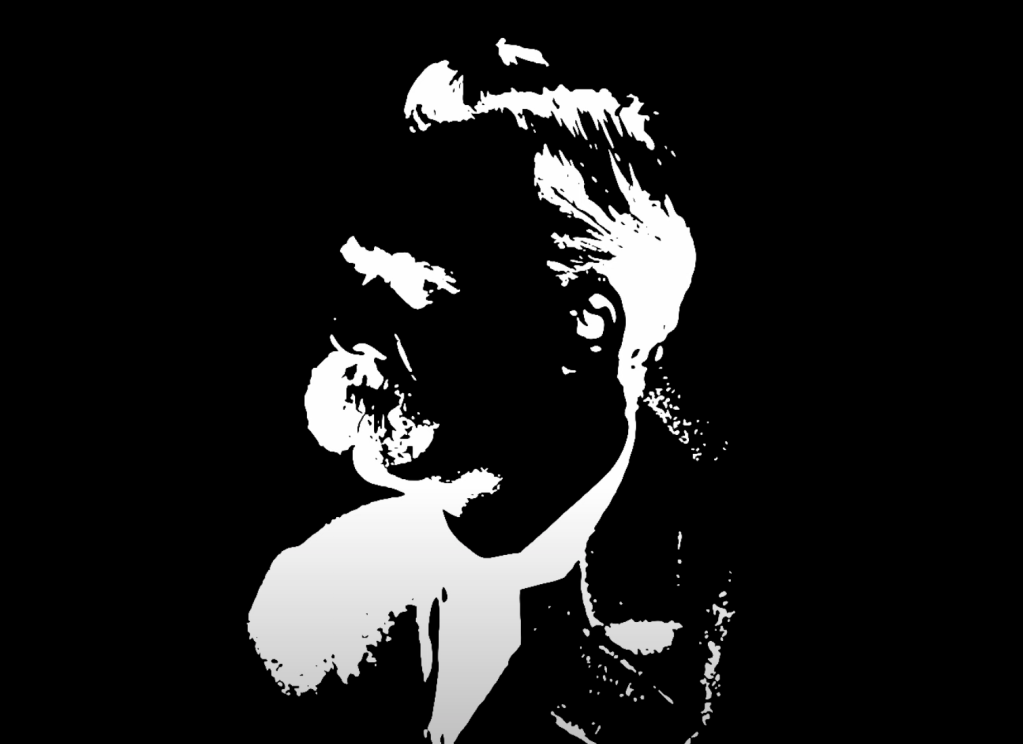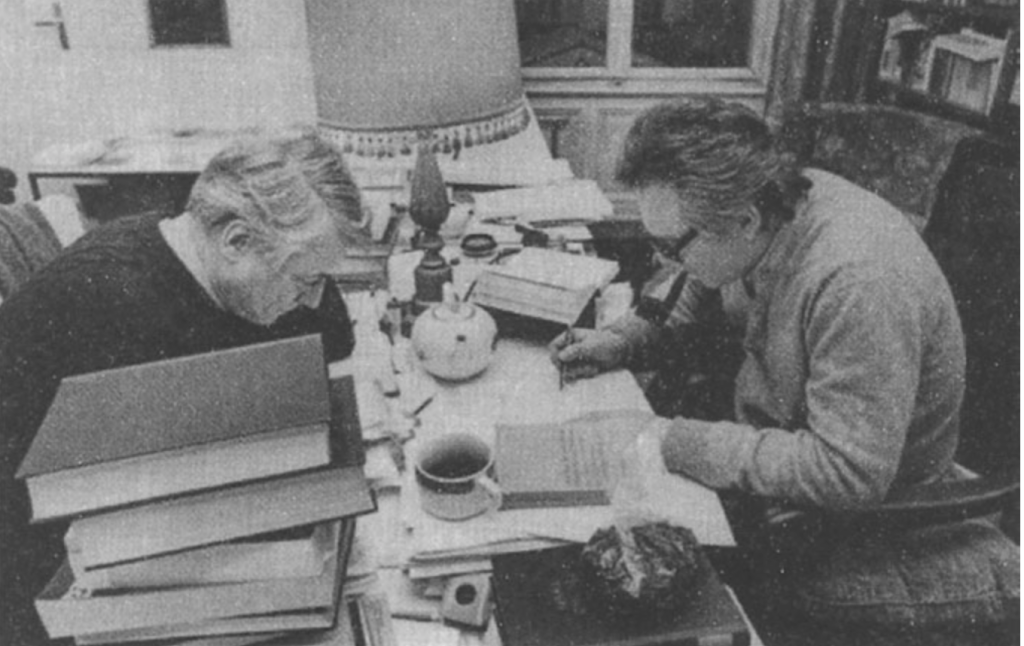In preparing for our birth — in a couple of weeks we are due! The womb is on my mind, that discarded, rejected zone by which we can only access in those familiar and comfortable dreams that Freud analyzed. But why not make more of this missing space, this lost object? Lacan’s mirror stage and the Freudian Oedipal formation have vanquished all traces of it. So I began my reading of Bracha L. Ettinger’s, The Matrixial Borderspace. Ettinger is an Israeli artist, theorist, and psychoanalyst whose work I want to describe and put into dialogue with Lacan, Kristeva, and others. I find her theory of the Matrix a compelling basis for an ethical project where we see a return to a sort of finite psychoanalytic Levinasian humanism. Ettinger writes of the feminine in psychoanalytic thinking:
“Before Oedipus, there is a feminine sexual difference which concerns the difference of the female child from another woman/m/Other and not from men, boys, or the father. In other words, the enigma of feminine difference is posed from the start between female subjects, and between the woman-beneath-the-mother and the woman-beneath-the-girl” (31).
As Griselda Pollock comments in the introduction to Ettinger’s work, “Even philosophers who readily agree that we cannot have any meaningful theory concerning the feminine without acknowledging the female body blush at any mention of pregnancy or the womb.” What precisely is philosophy and psychoanalysis’s problem with the womb, with birth, what Cornel West calls “the stank” we’re all born into?
As Freud says of the feminine, laying out the two roads available to psychoanalysis, and maybe to philosophy more generally:
“This is what I have to say about femininity: it is incomplete and fragmentary. If you want to know more about it, inquire from your own experiences of life, or turn to the poets, or wait until science can give you deeper and more coherent information.”
The problem is more than thinking “what does the woman want?” – which is what Freud would base the feminine problem around. The feminine is riddled with a series of obediences to conceptual regimes: the castration function, the phallus, the lost object of desire must always returning to its phallic origin and so on. Even the esteemed psychoanalyst feminist Julia Kristeva holds to the phallus.
Introducing Bracha L. Ettinger’s Theory and Art
Ettinger is an artist and most of her theories are developed through meditation with her art, and through exchange with her patients. Trauma becomes the transcendent condition of creation. Art is the place, the move, the act that first permits us to signify “impossible jouissance”, and “impossible relation”. Theoretically, she incorporates Deleuze’s organs without bodies into her work and this opens a space by which she can get beyond the Freudian das Ding of the Other, and toward a relational based ethics of psychoanalysis. Ettinger moves beyond the das Ding inherent in each Lacanian/Freudian object by proposing a “Thing-Encounter” and a “Thing-Event”. Her Matrix is rhizomatic. It emphasizes opens and acoustics, sonorous, tactile potentialities, etc. it moves beyond the inside / outside of organs, and beyond the Oedipal, and Ettinger refers to this as metamorphosis: “the process of change in borderlines and thresholds between being and absence, memory and oblivion, I and non-I…” it is a process of transgression and fading away. It has no center and cannot hold a gaze. It then passes a borderline to create a new one.”
She suggests that there are corpo-real processes beyond language which have the quality of intersubjectivity in potential. This allows us to approach the other in new ways, a praxis for ethical engagement that is outside of the conscious/unconscious, phallus/castration, but in more hidden ways. By recovering the irrecoverable trauma of the Real to phantasy, where trauma insists in repetition without ever representing itself – transsubjectivity rises from the Real into the imaginary and the Symbolic through a new vocabulary: Matrix, metamorphosis, borderlinking, borderspacing. The matrix is a signifier that offers a means of realigning subjectivity in tune with the possibility of a multileveled re-inscription of difference in the relation with the specificity of the humanized/humanizing female body-subject, which thus becomes a transformational potentiality for intersubjective transactions (11).
The second line of work that the Ettinger’s Matrixial theory develops is from Lacan’s late seminar on the synthome. In a reading of the gaze and object a, Ettinger proposes a new contour to the inherent holes cased by a repression that is never annulled. This primal repression creates a hole in the symbolic. Ettinger develops a conception of how to utilize the hole, which is the basis of the Matrixial dimension. As Lacan continues to point out that beyond all appearances we search for a “lack aspect” a lacking something separated, fragmented and lost. Importantly, this lacking something is not just any non-thing! It is a particular non-thing. It always has the same lacking value as the phallus. For Lacan, castration is the basis for all passing into the symbolic realm. And it is phallic lack that is the model for every loss of a primary part-object and for every separation from an archaic partial-Other.
Working off of late Lacan views of subjectivity, Ettinger proposes a subadjacent, subsymbolic stratum of subjectivity that expands and alters the symbolic itself. The symbolic is shifted to a logic that is able to coexist beside the phallic logic. The matrix therefore cannot be a substitution for the phallus. The web of meaning that is woven in the matrix is referred to as metamorphosis. The Matrix is not the opposite of the phallus, it is a supplementary perspective. She names a formation of subjectivity-as-encounter to account for sexual difference, a sexual difference that still stays true to Oedipal formations. These encounters occur at shared borderspaces between co-affecting partial subjectivities that are never entirely fused or lost, but shared and process within an always-already minimal difference.

The Matrixial Moment of Birth, and Metamorphosis
To understand Ettinger’s theory of the Matrixial borderspace, she asks us to conceive of the potential implications for subjectivity and the unique co-emergent becoming between partial-subjects, the I and non-I, the me and the stranger from within the space of the Matrix. In this borderspace of becoming, ‘we’ also of disappear and die. As Ettinger refers to her two core concepts, the Matrix and Metamorphosis:
“Matrix and metamorphosis explain certain phenomena of human symbolic experience that can relativize the concept of the phallus in Lacan’s and Freud’s psychoanalytic theories. The Matrix refers to a feminine dimension of the Symbolic order dealing with asymmetrical, plural, and fragmented subjects composed of the known as well as the not-rejected and not-assimilated unknown, and to unconscious processes of change and transgression at the borderlines, limits, and thresholds of I and non-I emerging in co-existence (13).”
The subject of the matrix is an enlarged subject that emphasizes a continual negotiation of separateness and distance within togetherness and proximity. Matrix is a zone of encounter between the most intimate and most distance unknown. Subjectivity functions as a shifting encounter – a subjectivity that is plural, but not infinite in a Levianisan way. The birth gives the child a set of registers to process trauma, the effects of change, and what Ettinger calls aesthetic eventings. Ettinger situates the aehetic in the birth where the child develops a ‘shadow of the object’ based on the violence of separation and the intensification of spatial difference, but there is a radical alterity that is developed at this stage, radical in the sense that it is not-yet-human. They become the “unthought unknown” that is made known in an event-encounter that is itself aesthetic and may be retraced through aesthetic practice.
Importantly, this Matrixial Borderspace does not refuse castration and phallic signification, and it remains in the realm of symbolic meaning making: “the womb and the prenatal phase are referents to the Real to which the imaginary matrix corresponds. The matrix is related to the womb, and is as such no more and no less a symbolic concept”. The emphasis on intrauterine experience is not an attempt to valorize the womb over the penis, but is rather a way of thinking the co-emergence of sexuality, art, subjectivity, and transsubjectivity.
It elevates the womb not to a phallic symbol, but to a transsubjectivizing severality – not grounded on any organ or anatomy – that the matrixal psychoanalytical theory elaborates. The mother and the baby after birth are involved in becoming-phallic objects for each other and for the psyche, but the Matrixial moment refers to the I and non I partial subjectivity emerging before either partner becomes in psychic terms an object for the other subject (and its drives). The I and non-I are unknown yet knowable through their partnership in difference. This is not about some oceanic otherness that is blissful, because the potential for traumatic and destructive as well as ethical or aesthetic concepts of jouissance remain.
I plan to make several additional posts on Ettinger’s Matrixial borderspace as I am still working through it.



Leave a comment